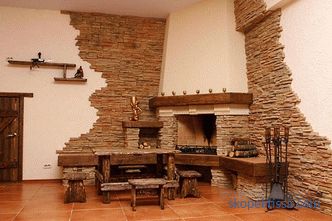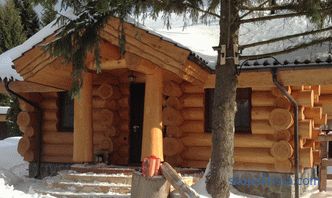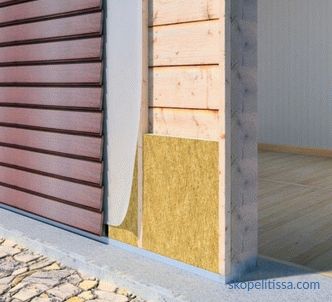The foundation is the underground part of the building, the foundation that transfers the load from the whole building to the ground. Proper design and construction contribute to a long and reliable construction service. But of considerable importance is the protection of the foundation from groundwater and flood waters, freezing, frost heaving, which can quickly destroy reinforced concrete and lead to irreversible deformations of the entire structure.
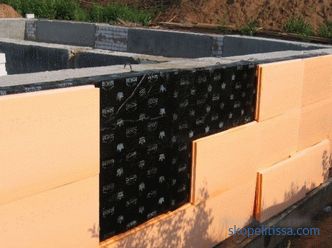
Technology in brief
The Russian company PENOPLEX in 1998 began manufacturing insulation boards from extrusion polystyrene foam. A group of enterprises in the cities of Kirishi, Perm and Novosibirsk produces construction and decorative materials on Italian high-tech equipment under the quality control of an accredited laboratory. Penoplex Foundation is an effective plate insulation that is widely used in our country for thermal insulation of capital structures both in private and in industrial construction. Protection of the bases against freezing increases energy saving by 20%.
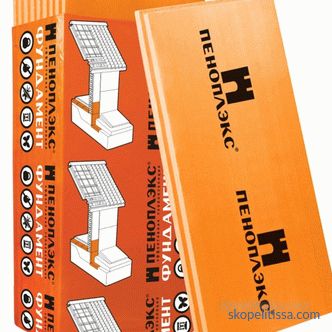
Insulation Properties
The heat insulator is produced in the form of orange plates with dimensions of 1200x600 mm and a thickness of 20-150 mm. For the convenience of splicing in the edges along the perimeter, a quarter is chosen. The raw material is polystyrene in granules, which at high pressure and temperature is treated with a catalyst - a mixture of freon and carbon dioxide. A mass resembling whipped cream is extruded — extruded through the molds. After the volatilization of the gas from the foamed polymer, small shallow pores with a diameter of 0.1–0.2 mm remain with the air.
The properties of the polymer material from which Penoplex Foundation is made, and its microporous structure determine the technical characteristics:
- Low water absorption. When testing only 0.2% of the water was absorbed in the first 10 days and 0.6% per month. Sealed cells do not allow moisture to penetrate into the slab, and suction occurs in external micro-cavities.
- Low thermal conductivity. At Penoplex Foundation, it is equal to 0.032 W / m ° C. This is the smallest indicator among construction materials. For example, at a brick it is 0.81, and at a pine it is 0.18 W / m ° C. The polymer is not afraid of moisture and does not lose its high insulating properties even in a humid environment, so it is used in the insulation of the bases on the outside without additional waterproofing.
- Vapor tightness. A dense layer of bubbles of polystyrene does not allow moisture vapor to penetrate through the plate of the insulator.
- Durability. Manufacturers claim that Penoplex Base service life is over 50 years. Institute NIISF confirmed this in the course of the tests.
- Low material density of 29-33 kg / m³ is determined by the high content of pores. According to this indicator, insulation is classified into Penoplex Foundation, Roofing, Comfort, Facade, Geo, Base.
- High compressive strength. The material is able to withstand loads of up to 20 t / m², and the densest samples up to 50 tons / m². In this case, the volume deformation does not exceed 10%.
- Heat resistance of Penoplex Base plates - from -50 ° C to + 75 ° C, in this interval all the physical properties of the material are preserved.
- Ecological safety. At installation and operation of a heater no harmful substances and gases are emitted.
- Chemical resistance. Aggressive acidic, alkaline environment, salts, alcohols, construction solutions do not interact with the heat insulator. Substances that destroy polystyrene foam - aromatic hydrocarbons, esters and polyesters, ketone compounds, oil paints, tar.
- Biological inertness, resistance to decay.
On our site you can find contacts of construction companies that offer the service of repair and design of the foundation. Directly to communicate with representatives, you can visit the exhibition of houses "Low-rise Country".
For roof insulation, Penoplex is produced with increased fire resistance (class G1). This is achieved by adding flame retardants - substances that prevent burning.
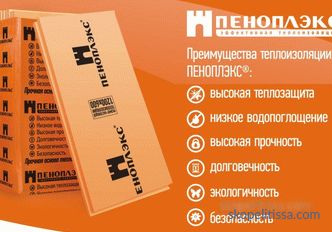
For structures in the ground, the fire resistance class of the material is not taken into account. Penoplex Basement is used for warming above-ground parts of a structure with subsequent protection with a non-combustible layer of not less than 30 mm, for example, with plaster or screed.
In more detail about the pros and cons of Penoplex sheets - in this video:
Calculation of the thickness of the insulation
Outdoor temperature in the winter in areas Far North differs significantly from similar indicators in the Krasnodar Territory. In different climatic zones, different thickness of the heat insulating layer is required to preserve the foundation from freezing.Therefore, before thermal insulation of bases, a thermal calculation is carried out according to the formula:
R = h1 / λ1 + h2 / λ2, where:
- R is the normative resistance to heat transfer (m² / ° С W), determined according to SNiP 23-01-99 "Construction climatology";
- h1 - foundation thickness (m);
- λ1 - thermal conductivity coefficient of the construction material (W / m ° С), is found according to the table SNiP 11-3-79 "Building heat engineering";
- λ2 - Penoplex thermal conductivity coefficient equal to 0.032 W / m ° С;
- h2 - the required insulation layer thickness (m).
The value is rounded off.
It is convenient to use an online calculator, where in the source data you need to specify the base material, its thickness and the standard value of R.
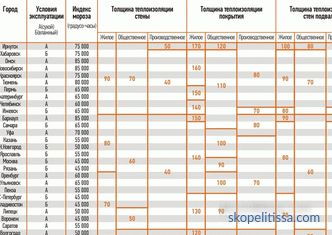
For the Moscow region as a result of the calculations, h2 = 0.096 m, i.e., the optimum thickness of the Penoplex plate Foundation is 100 mm. In the climatic zone of Belgorod, a reliable layer will create a heater no thinner than 50 mm.
It may be interesting! In the article on the following link read about the foundation of asbestos-cement pipes.
External insulation of the foundation
External insulation of the foundation by Penoplex is more preferable than internal. When installing heat insulating plates on the outer surface:
- Condensate does not form in the body of the structure, it is not moistened.
- Porous concrete does not freeze through, does not collapse from temperature fluctuations.
- Preserves the integrity of the external waterproofing.
- There is no dampness in the basement.
- From the foundation, cold does not penetrate the walls of the lower floors through the basement.
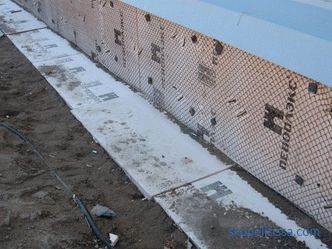
The process of insulation of the foundation of the deep foundation
Technology of base insulation, sole which is below the level of freezing, includes:
- Surface preparation - cleaning, leveling with plaster. Irregularities should not be deeper than 5 mm.
- The device is a waterproofing of two layers - coating and roll. Overlap panels - not less than 100 mm. It is necessary to isolate the entire height of the basement and the basement with an approach to a horizontal surface.
- Installation of Penoplex plates. Apply mastic or special glue for water-based thermal insulation. When overlaid waterproofing using the method of planting insulation on the heated bitumen surface. The direction of laying - from the bottom up. Joining the panels with a comb in a quarter, seeking the most snug fit. In the underground part of the structure it is prohibited to use additional fasteners, which imply drilling holes. This breaks the waterproofing layer, creates the danger of moisture penetration into the body of the foundation.
- Seal the joints with glue-foam, laying the second layer of slabs with offset joints. Instead of one thick plate it is better to lay two thin ones in order to avoid the formation of cold bridges.
- Waterproofing installation on Penoplex plates for the foundation. Carried out from roofing felt, glassine, profiled geomembranes or waterproof plaster on the reinforcing mesh.
The device is completed with a drainage device and backfilled with non-foaming materials - coarse sand, sand and gravel.
Thermal insulation of a shallow foundation and a blind area
The sole of this foundation is located above the ground freezing level, at a depth of 30-50 cm. in a way:
- A drainage system is arranged in the sand-gravel bed of the excavation, and the sewage and water supply are laid.
- Compact the base with a vibrating plate.
- Lay the Penoplex Base plates.
- Arrange waterproofing.
- Install the formwork under the tape structure.
- Mount the reinforcement cage.
- Pour concrete in, compacted with a deep vibrator to release air bubbles.
- After the shutter speed in the formwork, the shields are removed, the outer surfaces are insulated similarly to deep foundations.
- Carry out the backfilling with sand-crushed stone mixture with layer-by-layer tamping, not reaching the ground level of 30 cm. layer of waterproofing with gluing seams.
- Mount the Penoplex Base plates against the vertical thermal insulation.
- The insulation is protected from above with a thick film with an overlap of 15 cm on the basement.
- The reinforcement mesh is laid, and the blind area is poured with concrete.
Internal insulation of the foundation
When it is not possible to insulate the foundation outside the house with penoplex, the plates are laid from the inside from the basement or the technical underground. This will not protect the foundation structure from the effects of cold and damage, but will help to maintain the temperature in the room, protect the building from heat loss.
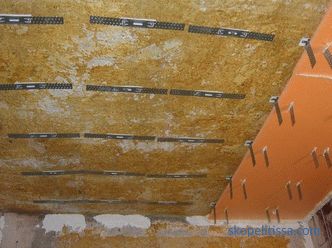
The work is carried out in the following order:
- Prepare the surface - clean, align, seal cracks, seams, shells.
- Handle basement walls with protective compounds. For buildings on heaving moist soils, it is recommended to use penetrating waterproofing. It creates a barrier to moisture in the thickness of the concrete, preventing through filtration of water.
- In a staggered manner, stick Penoplex Foundation plates. Use tools without organic solvents that destroy the polymer.
- Additionally, the panels are fixed after the glue dries, with dowels with caps, immersing them flush.
- Mount the reinforcing mesh on cement glue, plaster the surface of the walls.
- Perform a finish.
It might be interesting! In the article on the following link read about the column foundation from the blocks.
Conclusion
Base insulation is a necessary construction operation for improving the working conditions of a structure, extending its service life, saving money for heating a building. Penoplex Base plates are a technological solution for arranging external or internal thermal insulation and a warm blind area.
Rate this article, we tried for you
